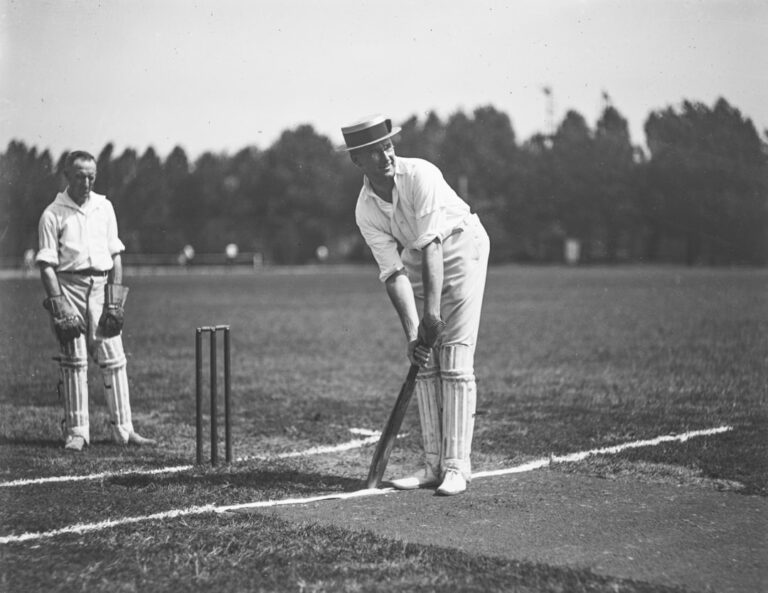Baseball stirrups are primarily a relic of the past, born out of necessity rather than fashion.
In the early days of the game, players wore long, baggy pants that often revealed their colorful socks. However, the dyes used in these socks were highly toxic and could cause severe infections if they came into contact with open wounds, which were common due to the cleats and intense play.
To protect themselves, players began wearing white “sanitary” socks underneath their colored ones. But this created a new problem: two pairs of socks were difficult to fit into cleats. The solution was the stirrup, a footless sock with an opening at the bottom. This allowed players to wear both pairs of socks comfortably while showcasing the team colors and logos on the stirrups.
While the health risks associated with sock dyes have long since been eliminated, the tradition of wearing stirrups has endured. Today, they are more of a stylistic choice than a necessity, adding a touch of nostalgia and individuality to the game.
Though not as prevalent as in the past, stirrups still hold a special place in baseball culture, and many players and fans continue to embrace this classic piece of baseball attire.
The Historical Roots of Stirrups in Baseball
Stirrups were first introduced into baseball uniforms in the early 20th century. Originally, baseball players wore simple woolen socks, but over time, the design evolved for both practical and aesthetic reasons. The stirrup sock was created to be worn over a white sanitary sock, which helped prevent infections and injuries that were common when players wore colored socks directly against their skin.
The reason for the distinctive cut-out design of stirrups was twofold. First, it allowed teams to display their team colors prominently, even when the pants were pulled down. Second, it helped create a clean, uniform look among players, as the white sanitary sock was visible beneath the stirrup. This combination of style and function helped solidify stirrups as an integral part of the baseball uniform.
The Evolution of Stirrups in Baseball
Over the decades, stirrups became a symbol of baseball tradition. In the 1960s and 1970s, stirrups were worn high, with a significant portion of the sanitary sock visible, creating a sharp contrast between the two layers. This became a fashion statement, with players often customizing the height of their stirrups to suit their personal style. Some players even cut the stirrup to expose more of the sanitary sock, adding a level of individuality to their uniform.
However, by the 1980s and 1990s, the trend began to shift. Many players started wearing their pants longer, covering the stirrups and sanitary socks entirely. This change was partly due to comfort and partly due to evolving fashion trends in sports. Despite this shift, some players continued to wear stirrups, either for personal preference or as a tribute to the traditional baseball look.
The Role of Stirrups in Modern Baseball
In today’s game, stirrups are less common than they once were, with many players opting for solid-colored socks or even going without visible socks altogether. However, stirrups are still worn by players who wish to honor the history of the game or adhere to team traditions. Some teams have even reintroduced stirrups as part of throwback uniforms, bringing a nostalgic element to the field.
Stirrups also serve a practical purpose in the modern game. They allow players to showcase their team colors and logos in a way that solid socks do not. This can be particularly important for teams with distinctive color schemes or iconic logos. Additionally, stirrups can help create a sense of unity among players, as they all wear the same distinctive style on the field.
Stirrups and the Culture of Baseball
Beyond their practical uses, stirrups are deeply ingrained in the culture of baseball. They are a visual reminder of the sport’s long history and the many great players who have worn them over the years. For many fans, seeing a player in stirrups evokes memories of baseball’s golden era, when legends like Mickey Mantle and Ted Williams graced the field.
Stirrups also represent a connection between past and present. By wearing stirrups, modern players pay homage to the traditions of the game and the players who came before them. This continuity is one of the things that makes baseball unique among sports, where history and tradition are celebrated and preserved.
The Future of Stirrups in Baseball
As baseball uniforms continue to evolve, the future of stirrups remains uncertain. While they are less common than they once were, they still hold a special place in the hearts of many players and fans. Some teams have embraced stirrups as part of their identity, incorporating them into their regular uniforms or using them for special occasions like throwback games.
Ultimately, whether stirrups remain a part of baseball uniforms in the long term will depend on the players and teams themselves. As long as there are players who value tradition and fans who appreciate the history of the game, stirrups are likely to remain a part of baseball’s rich tapestry.
Conclusion
Baseball players wear stirrups for a variety of reasons, from tradition and aesthetics to practicality and team unity. While the popularity of stirrups has waned in recent years, they continue to be a symbol of baseball’s storied past and a way for players to connect with the history of the game. Whether worn for style, function, or nostalgia, stirrups remain an iconic part of the baseball uniform, representing the timeless nature of America’s pastime.





